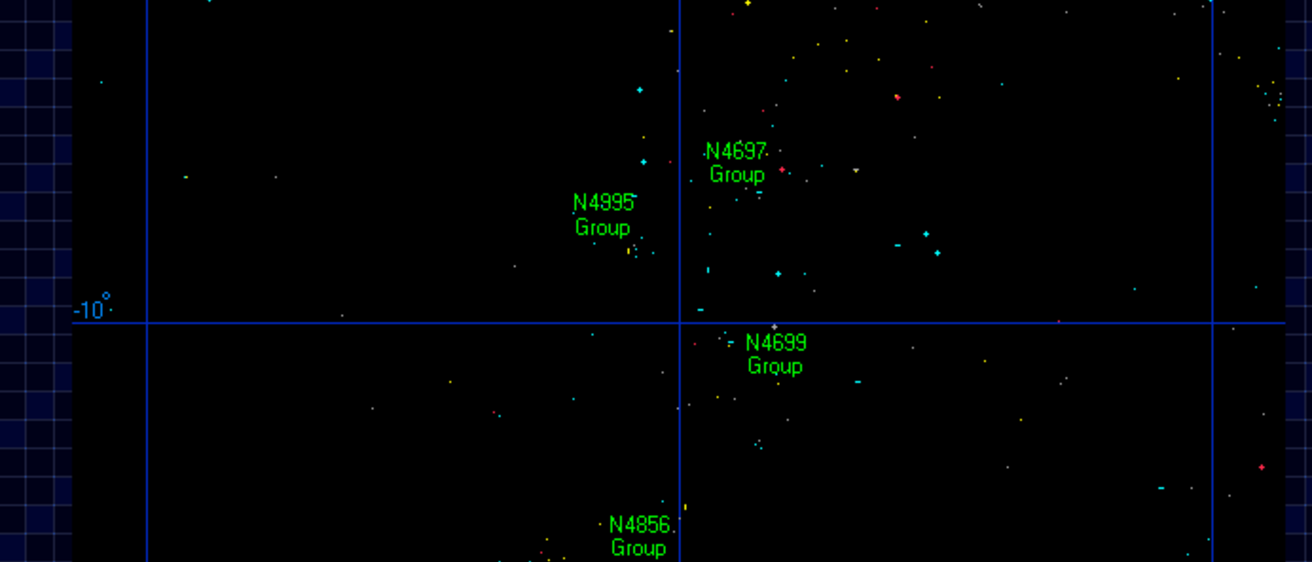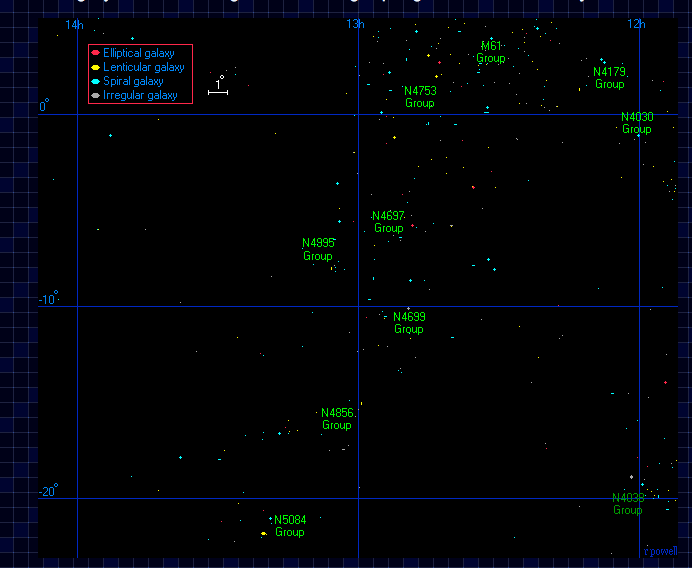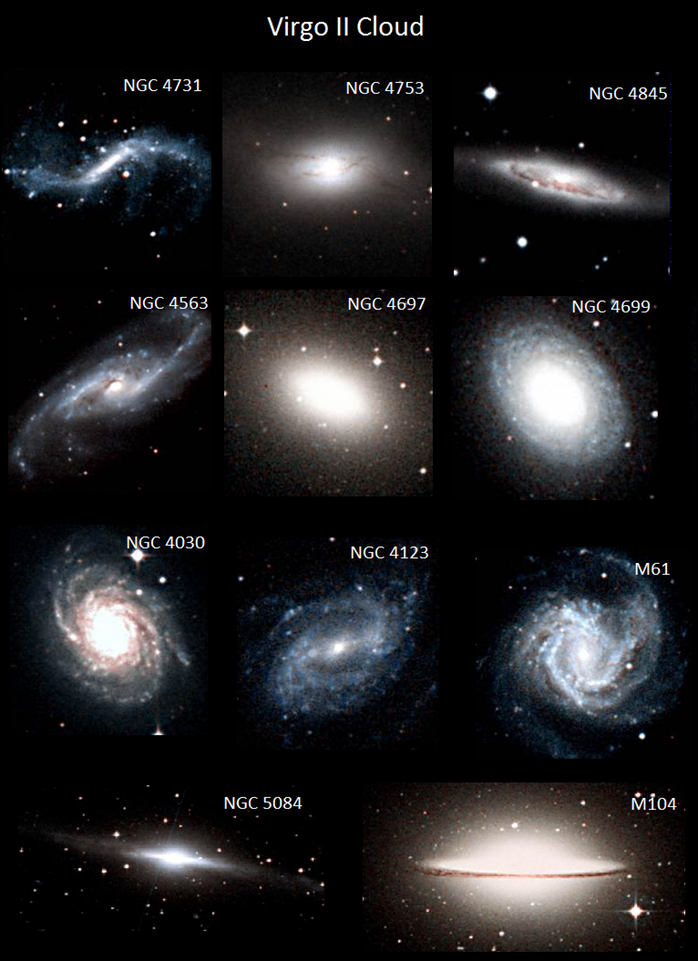
Breadcrumb
- Home
- Labs
- Advanced Labs
- Classifying Galaxies
- Part 2: Galactic Stamp Collecting
- Virgo II Cloud
Virgo II Cloud
Virgo II cloud is host to a 100 galaxies. It is at RA=12h 00m — 13h 30m Dec= +5 deg — -25 deg. It is approximately 55–80 million light years away and is part of the cluster Virgo, Laniakea Supercluster. The images above are HST images available on NED and NASA’s space telescope website.

